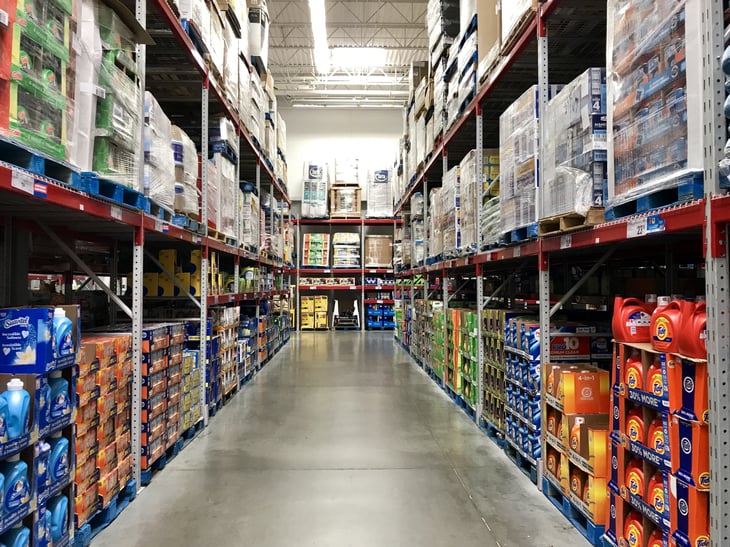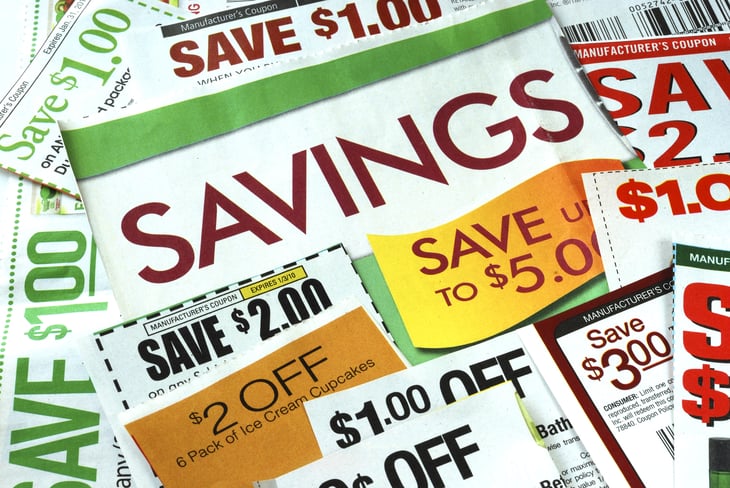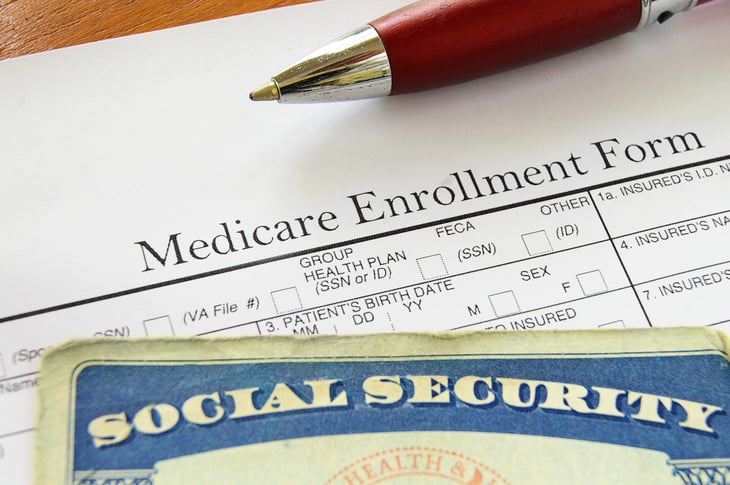
Editor's Note: This story originally appeared on NewRetirement.
We’re living healthier and longer. For that we owe a big thank you to the scientists and doctors who make recommendations and medicines that make healthy living possible. But, prescription costs can dig into your budget. It is useful to know how to save money on prescription drugs, especially the drugs prescribed for chronic conditions that develop later in life.
Which Households Find It the Most Difficult to Afford Prescription Drugs?

As we get older, we end up taking more medicines, and that’s not cheap. According to surveys by Kaiser Family Foundation (KFF), nearly a quarter of Americans say it’s difficult to afford prescription drugs.
This should not be surprising, as U.S. prescription drug spending per person is about double the amount spent in peer countries and about 8 in 10 U.S. adults say their cost of prescription drugs is unreasonable.
50- to 64-year-olds: For people who are 50 to 64 and nearing retirement, 3 in 10 say it’s difficult to pay for prescription drugs. This age group is squeezed from both sides. On one hand, they are more likely than younger people to be prescribed drugs, especially for chronic problems, but they are too young to qualify for Medicare.
Medicare recipients: Once you qualify for Medicare, it generally becomes easier to afford prescriptions. Only 20% of Medicare recipients have trouble affording drugs.
Besides age, these are the factors that really contribute to drug affordability:
- 35% of people who take four or more prescriptions find it difficult to afford drugs.
- 58% of people who spend more than $100 a month struggle with drug affordability.
- 49% who are in poor health find it hard to pay for prescriptions.
For those folks, the cost of health care, including medicines, is a wake-up call. Have you budgeted enough of your retirement savings to pay for health care — especially if Medicare won’t cover the cost?
To keep costs down, here are some practical steps to lower your prescription medication costs.
1. Learn to Talk Honestly With Your Doctor

A study in California proved what we all know: It can be hard to talk to your doctor. Eight in 10 people said they felt uncomfortable challenging their doctor’s authority. But you should be honest with your financial and health concerns. Ask questions and overcome your hesitation and make a plan that is good for your health and your budget.
2. Try Some TLC: Make Lifestyle Changes Instead of Drugs

Be sure to ask your doctor about alternatives to drugs – lifestyle changes may be more effective and far less costly.
Most of the major medical associations — the American Heart Association, American Diabetes Association, the National Heart, Lung and Blood Institute and more — recommend lifestyle changes called “Therapeutic Lifestyle Changes” (TLC).
TLC usually means improving your diet and exercise.
3. Ask for Generic Versions and Free Samples of Your Medicines

When being prescribed medicine for a condition, your first question to the doctor should be, “is there a generic version of this?” There may not be, but it never hurts to ask. Remember, don’t be afraid to tell the doctor you’re trying to keep costs low.
Doctors may also have free samples they can give you. Every pill you don’t pay for reduces your per-unit cost.
4. Join the Club

Don’t assume that prices are the same everywhere – they’re not. A study by Consumer Reports found that big-box stores like Sam’s Club and Costco were consistently cheaper than “brand name” drug stores like Rite Aid and CVS.
5. Go Local

The Consumer’s Report research also found that your local independent pharmacy is also probably cheaper than a chain pharmacy.
Another upside of your local, independent pharmacy is that you can talk to them in person. Before the pharmacist runs your insurance, ask them about in-store discounts and whether they accept coupons. Asking for “all available discounts” can save you a bundle.
6. Comparison Shop

You can use websites like GoodRx to find the lowest prices locally. Just enter the name of your prescription and your location, and they give you a list of options and you can compare costs.
7. Find Coupons

GoodRx is great for comparison shopping. It also often gives you access to coupons. Other prescription drug coupon sites include Optum Perks, which gives you access to coupons and vouchers for discounts, making it a doubly good deal.
8. Harness the Power of Mail Order

Local doesn’t necessarily mean better if you can get more of your prescription at a lower cost online. Many chain pharmacies like Walgreens and CVS have online delivery options as do grocery stores like Kroger, Publix and Walmart.
If you are filling prescriptions online and having them delivered, be sure to make sure they have an accredited pharmacist listed on the website.
NOTE: If the site has a pharmacy in the URL it’s a sign they’re legit.
Mail-order pharmacies also make it easier to buy medications in bulk, which saves time and money.
9. To Copay or Not to Copay

The economics of the pharmaceutical industry are convoluted, to put it nicely. If your insurance pays for medicine, you are obliged to foot the flat copay fee. Sometimes that means you’re co-paying $15 for a $10 prescription.
If your deductible is high, you might end up paying for the prescription out of pocket anyway. And pharmacies ask for your insurance automatically. So always do the math before you reach for your insurance card, and ask what it costs to pay without using your insurance.
10. Ask for the Cash Price

Why is paying cash for gas cheaper than paying on a credit card? Maybe for the same reason that paying cash for your prescription drugs is cheaper than paying with your insurance.
Dr. David Belk’s book “The Great American Healthcare Scam: How Kickbacks, Collusion and Propaganda Have Exploded Healthcare Costs in the United States” goes into detail on how drugmakers, insurance companies and pharmacies make more money by not telling you that paying cash can be cheaper.
The bottom line is that you could pay less by asking if there is a cash price before you buy.
11. Use a Prescription Discount Card

Getting a discount for prescription drugs is easy with a prescription discount card. FamilyWize, a nonprofit, offers a popular card, as do for-profit companies like WellRx.
Discount cards are free and very helpful if you don’t have insurance — so what’s the catch? The short answer is, there isn’t one.
Drug discount cards work the same way loyalty cards work: Cardholders are directed to a set of pharmacies that are participating members.
The pharmacy pays the card issuer a referral fee, and in return, they get more business. Because some discount cardholders don’t have generous insurance plans, the pharmacy also gets customers who might have simply skipped buying the medication.
12. Make Sure Medicare Works for You

Medicare is like life: complicated and exhausting. Without going into the nitty-gritty of how to apply for and get benefits from Medicare, suffice it to say that you need to do your homework when looking at the Medicare plan you want.
Also keep in mind that Medicare, like most other insurance coverage, has an election period (usually in October and November) when you can change or update your plan. If you miss this window, you may have to wait a year for your next opportunity. You can get more detail in Medicare’s official guide to prescription drug coverage.
If you are already taking a set of medicines, be sure that your prescriptions are on the Medicare plan’s “formulary” or list of covered drugs. If it’s not, you may be on the hook for the total price of the drug.
Medicare has rules that allow your doctor to ask for your plan to make an exception for your prescription. Or you could ask for a different drug that is on your formulary and treats your condition, if that drug exists.
13. Apply for Medicare Extra Help

Medicare Extra Help is a program for lower-income Americans to get approximately $5,000 per year to help pay for prescription drugs not covered by their Medicare plan. You can apply here.
According to the Social Security Administration webpage, “to qualify for the Extra Help, a person must be receiving Medicare, have limited resources and income, and reside in one of the 50 States or the District of Columbia.”
14. Research PAP and SPAP Programs

The National Council on Aging (NCOA) defines Pharmaceutical Assistance Programs (PAPs) and State Pharmaceutical Assistance Programs (SPAPs) as programs that assist low-income seniors and adults with disabilities in paying for their prescription drugs. These programs generally provide “wraparound” coverage, which means they cover costs that Medicare Part D doesn’t pay.
Not all states have SPAP programs, and Medicare publishes a list of active programs. Medicare also has a website that helps members find assistance programs.
15. Make Prescription Drug Costs Part of Your Retirement Plan

Be sure to use the NewRetirement Planner to see if you have budgeted enough savings for out-of-pocket medical costs.
The tool helps you get a personalized estimate of your out-of-pocket medical costs using your ZIP code, types of coverage you have and plan to have, your medical conditions and more …
The NewRetirement Planner is the most comprehensive and personalized way to create and maintain a reliable retirement plan.
With enough money saved and a smart approach to spending, your life will be long, happy and healthy.





Add a Comment
Our Policy: We welcome relevant and respectful comments in order to foster healthy and informative discussions. All other comments may be removed. Comments with links are automatically held for moderation.